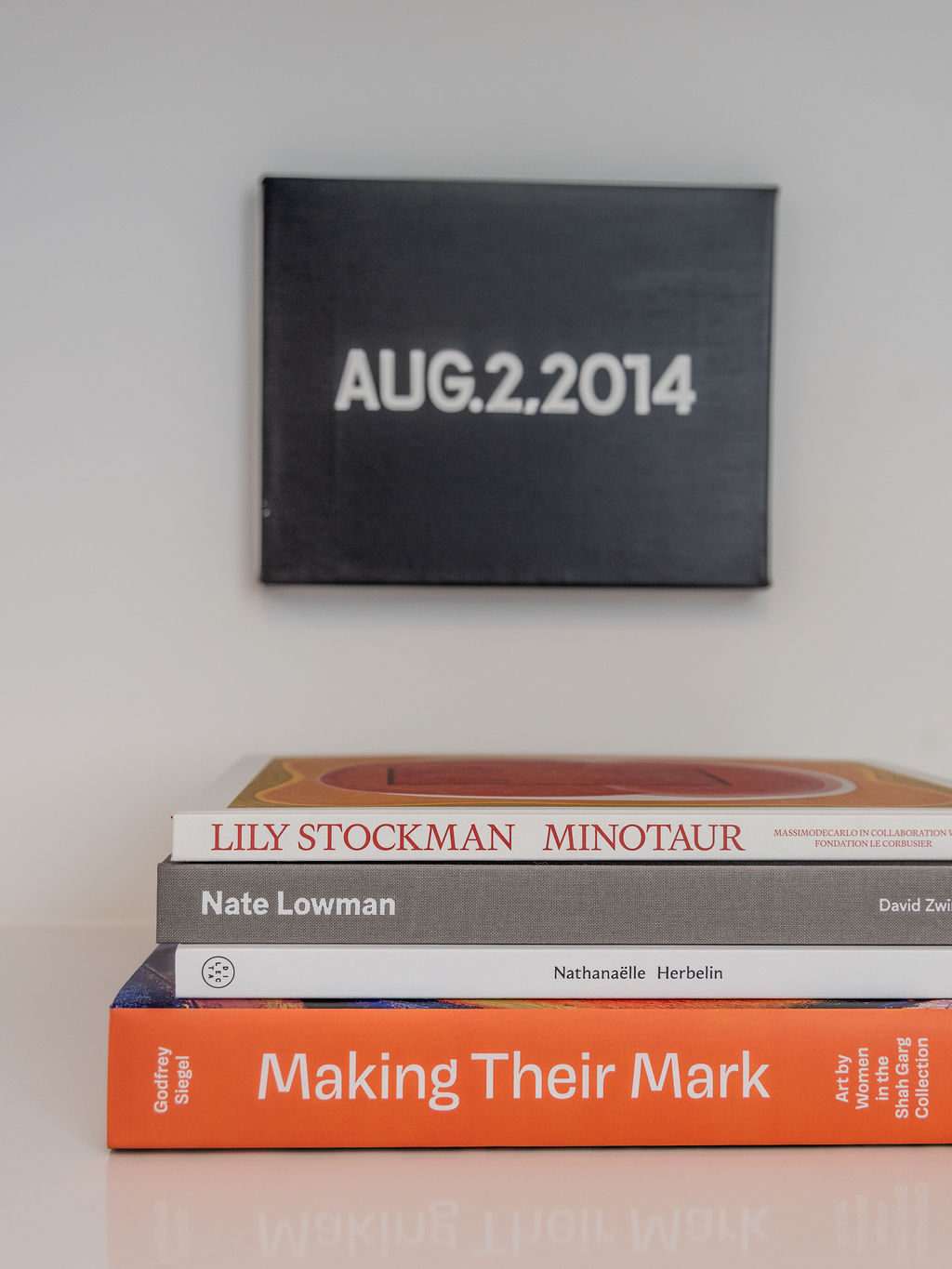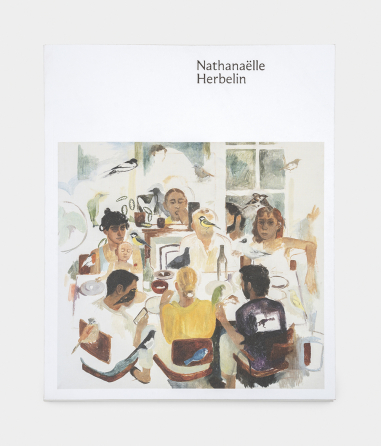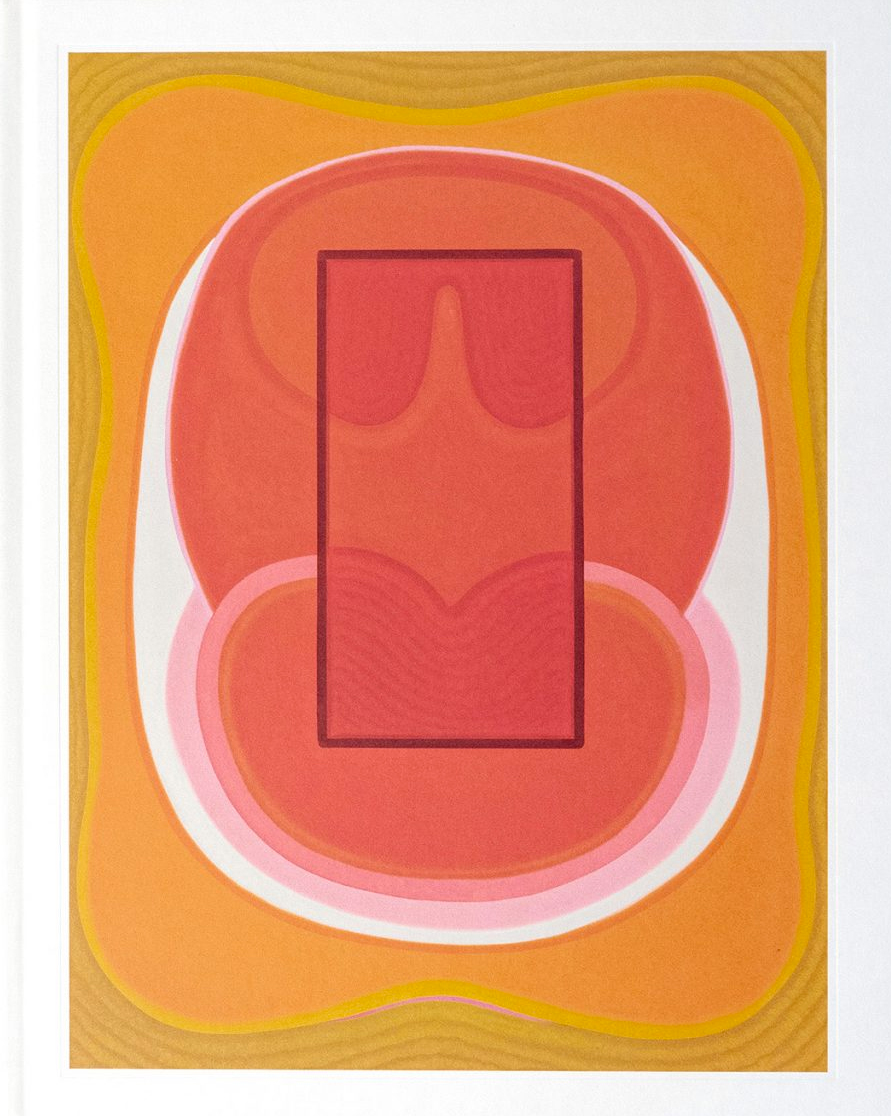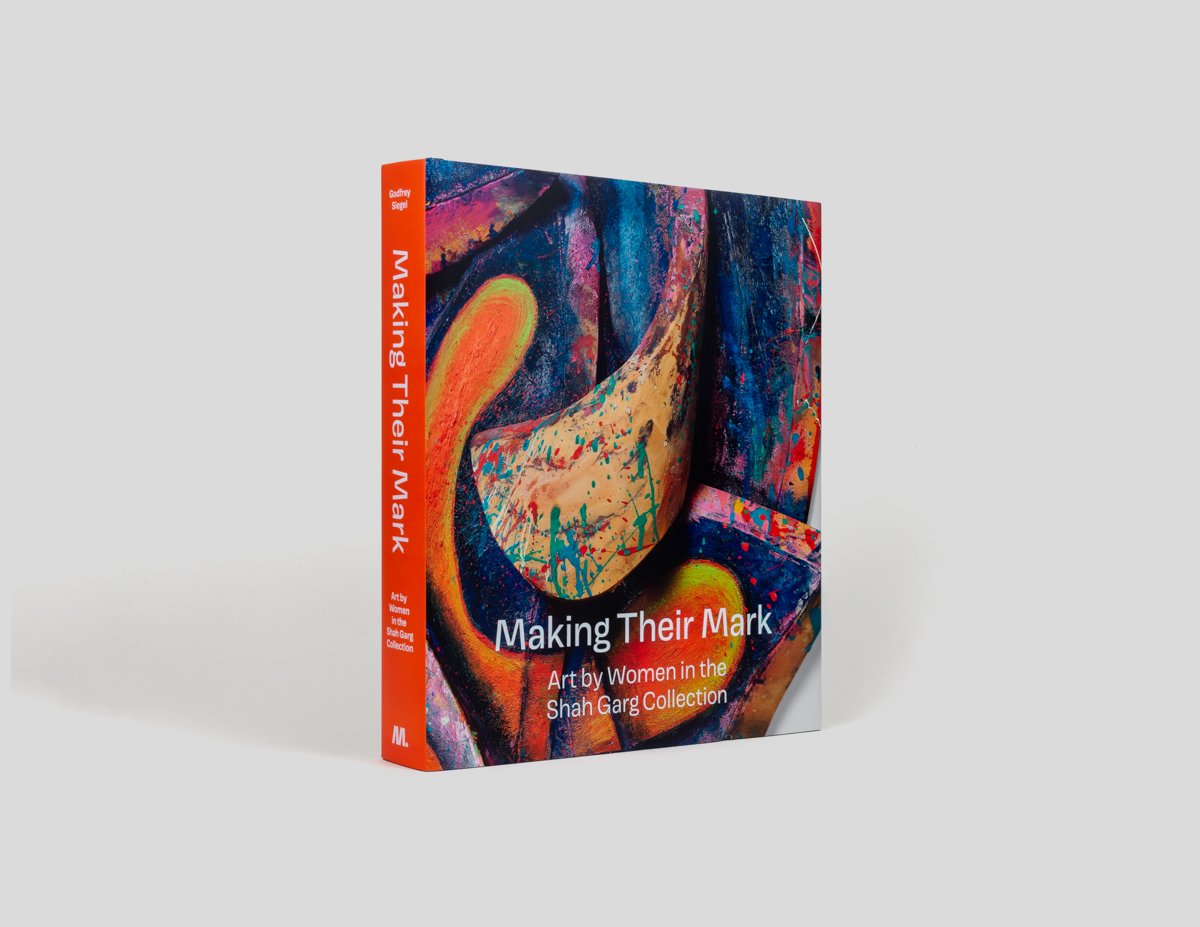

This week, we bring to the table–or the shelf–Nathanëlle Herbelin, Nate Lowman, Lily Stockman, Chantal Joffe (from the Shah Garg Foundation), and Eric Doeringer. At first glance, the connections are not obvious—but sitting with them a quiet, connective thread begins to appear. These are artists who see interior spaces—literal or emotional—as places of intimacy, tension, and transformation. Each in their own way invites us in to observe, to feel, and to be changed.

Nathanaëlle Herbelin paints interiors that hum with presence. Her rooms are sparse, even restrained, but they’re not empty. The emotional air in them is palpable. A curtain pulled just so. A shadow held longer than expected. She paints moments in which the quiet says more than speech. In a way, she gives the residue of human experience, voice.

Nate Lowman takes the language of American culture—symbols, signage, mass imagery—and lets it fray. A smiley face becomes a wound. A road sign becomes a question. His work centers contradiction: ironic and sincere, graphic and ghosted. Nate asks of the viewer: “What do you you know?” His work reminds me that critique can be tender.

Lily Stockman brings us into organic abstraction. Her paintings are careful and calm, rooted in natural forms and deeply attuned to color and space. (You can see the painting I commissioned from Lily here.) There’s a meditative precision in her work —a kind of visual breathing. Inspired by gardens, landscapes, and devotional architecture, her paintings feel like diagrams of memory, not dissimilar to Nene Humphreys work (link to podcast). Among this group here, Lily’s work reminds us that beauty is both natural and rigorous.

Chantal Joffe, featured in the book, Making Their Mark: Art by Women in the Shah Garg Collection, charges straight into feeling. Her portraits, often of women and girls, are raw, intimate, and emotionally complex. She paints with urgency and affection, finding truth in distortion. Because her subjects aren’t posed, she reveals without idealizing. Joffe reminds me of the strength that comes in and from vulnerability.
Eric Doeringer is known for his meticulous “bootlegs” of iconic conceptual artists—On Kawara, Sol LeWitt, Richard Prince—his practice is about homage, appropriation, and the question of originality. He asks us to consider what really makes an artwork: the hand, the idea, or the act of remembering. In this grouping, the date–the day we opened the new Aspen Art Museum–is a clearly defined space in time, holding the memories, vivid and alive, of August 2, 2014. Together, these five artists create a kind of emotional architecture—one made of memory, tension, ritual, and re-seeing. They remind me that art holds—for silence, for softness, for the complicated beauty of being human.
